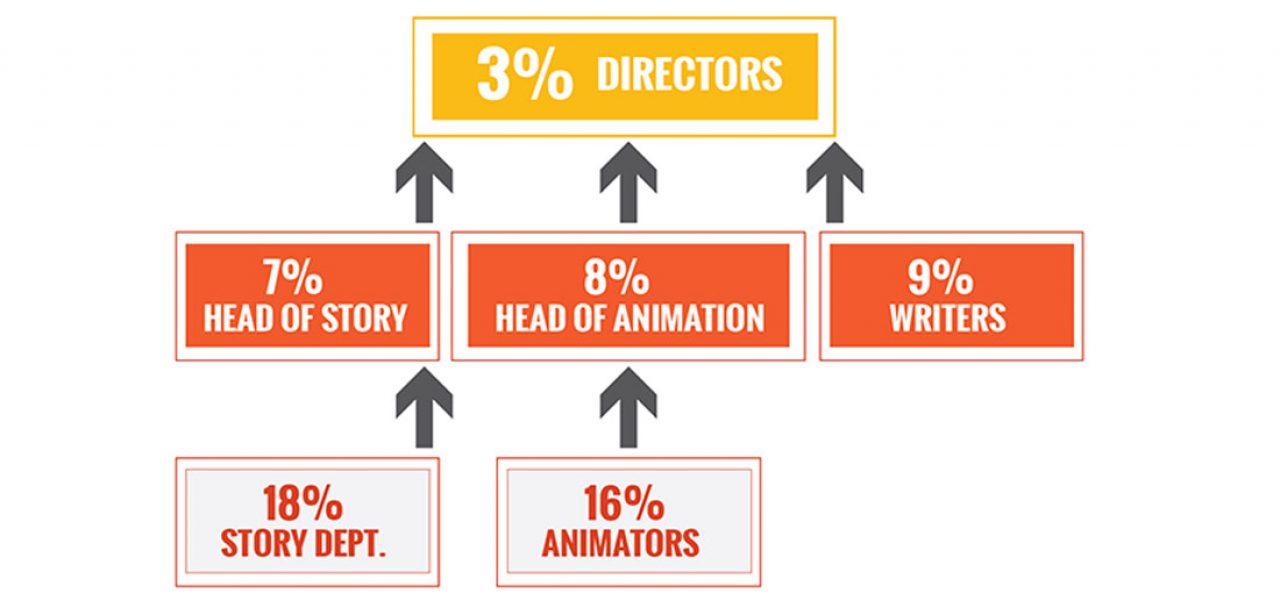
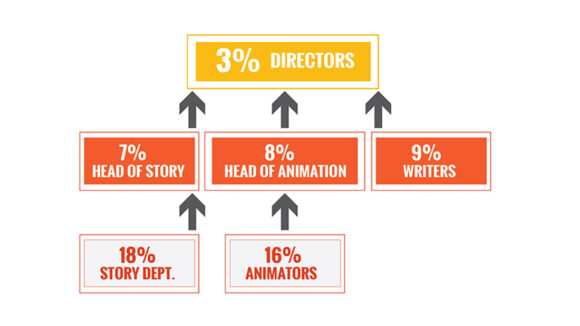
Annecy 2019: First-Ever Inclusion in Animation Study Confirms Obvious Lack Of Opportunities For Women In Industry
Today at the Annecy International Animation Film Festival, a new study that examines the state of inclusion for women in the business was presented for the first time. Dr. Stacy L. Smith and the USC Annenberg Inclusion Initiative created the study titled “Increasing Inclusion in Animation,” which is the first-ever investigation of this kind focused specifically on the animation industry. The project was conducted in partnership with Women in Animation.
The results confirm what we already know – there has been a historic lack of opportunities for women in the animation industry, and there continues to be a lack of opportunities for women — but also adds unprecedented detail and data, and explores the topic from many different angles. It finds areas where women have made significant strides in the industry (particularly on the management side, which has historically been where women had the most opportunities in animation), and also finds the weakest areas of the industry (providing opportunities for women from a variety of racial/ethnic backgrounds).
This quantitative analysis evaluated the prevalence of women in key roles above and below the line, as well as in executive positions across major companies and studios producing both films and television series. The investigation went even further by assessing the presence of women across prestigious animation programs and also looked at the animated short films presented at top-tier festivals.
In addition, the qualitative part of this report is comprised of 75 in-depth interviews with both early-career women and decision-makers, and it incorporates survey data from more than 250 animation professionals who are part of the Animation Guild.
What the researchers learned from the quantitative findings is that women now comprise nearly half of the executives in animation and fully half of the most powerful positions in major film animation companies and studios. Information obtained from looking at animation education programs and film festivals also that there is a functional and successful pipeline that takes animation students to their first jobs in the industry.
“Another area in which we see some progress is with female producers of animated films,” said Dr. Smith. “In the last 12 years, 37% of producers of animated movies were women, while for live-action films, the figure was 15%. The proportion of women in this leadership role in animation, and the progress made in the last decade indicates that there are spaces where the industry is taking inclusion seriously and affecting change. However, only 5% of producers of animated films and 1% of live-action producers were women of color. The movie industry is completely out of step with the audience in this regard.”
In below the line roles, women are still outnumbered in film and tv. Across 52 top animated films from the past 5 years, only 7% of head of story positions were filled with women, as were 8% of animation heads, and 14% of art directors. Women of color held 6%, 3%, and 4% of these positions, respectively. Across 100 popular animated tv series, females comprised 16% of animation directors, 20% of lead animators, and 11% of lead storyboard artists. Slightly higher percentages of women of color were observed in these roles in comparison to film, as 8%, 13%, and 3% of positions across these respective jobs went to women from underrepresented racial/ethnic backgrounds.
Results from the qualitative analysis also showed the major impediments facing women in the animation industry. Responses indicated that a male-dominated and masculine culture affects females, that the industry view of women is less valuable, and that women are perceived to be less interested in the field. Unique impediments facing women of color were also explored, namely the negative consequences that emerge from being a “token,” including feelings of isolation.
“This study validates what we have known all along, that women are a hugely untapped creative resource in the animation industry,” adds Marge Dean, President of Women in Animation. “Now that we have a greater understanding of how the numbers fall into place and what solutions may help rectify this deficiency, we can take bigger strides towards our goal of 50-50 by 2025.”
Here are some charts that help summarize the contents of the study, though anyone interested in learning the entire story should read the full report HERE.
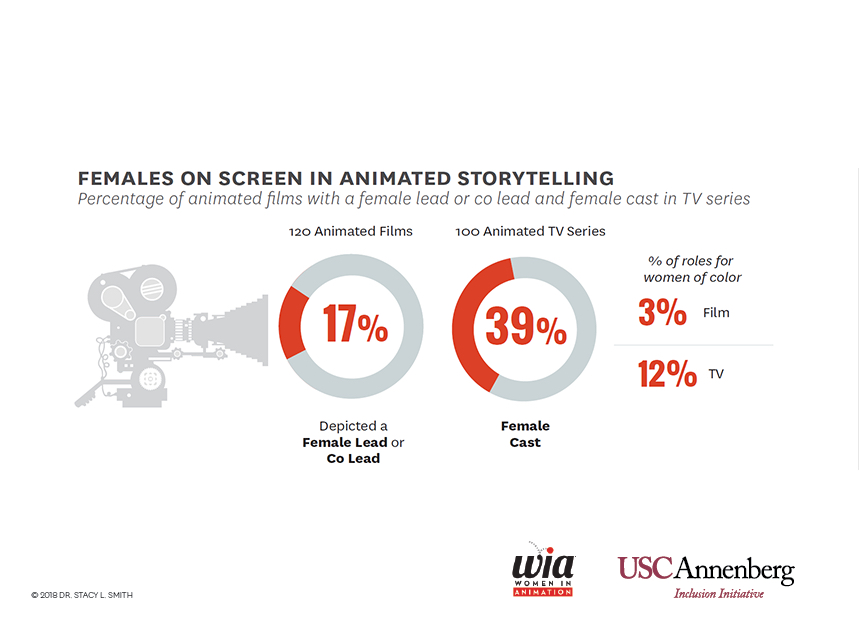
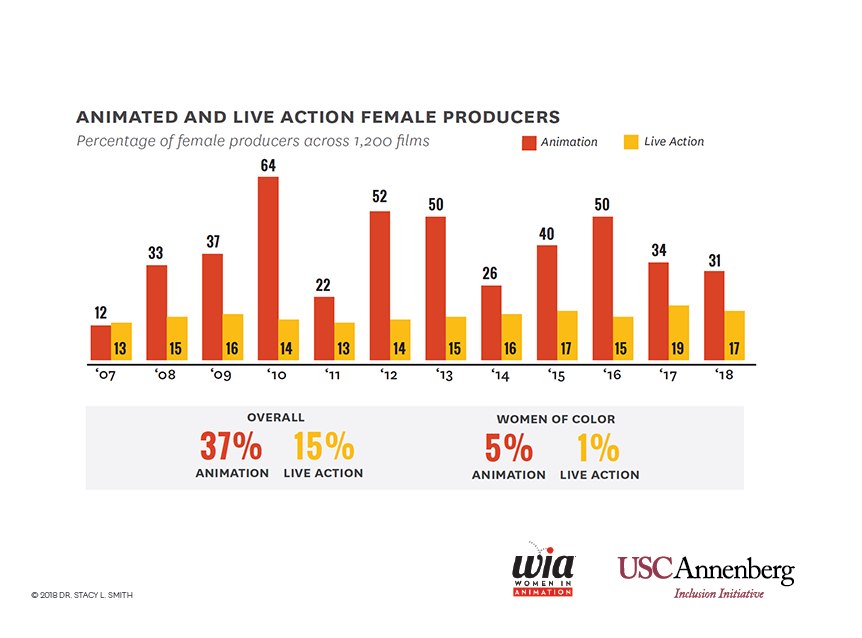
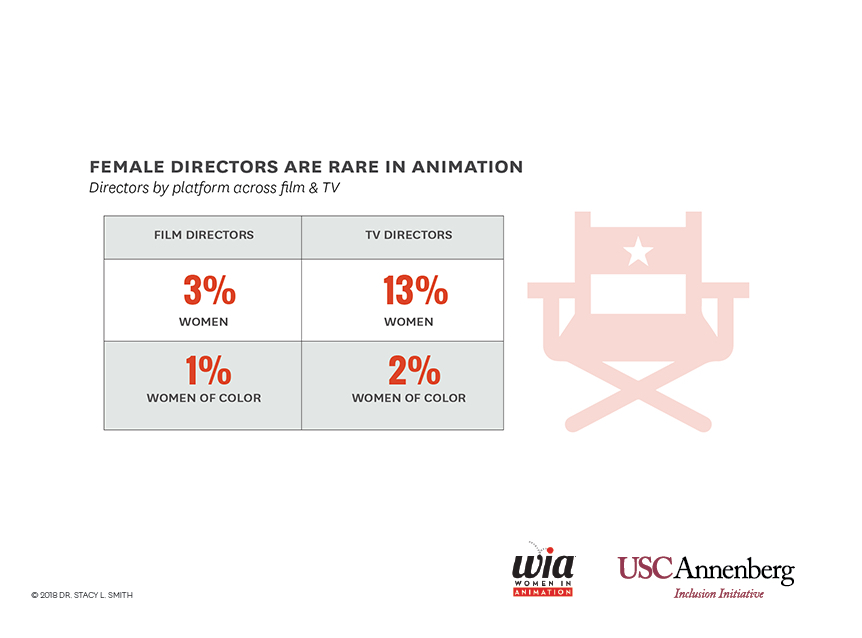
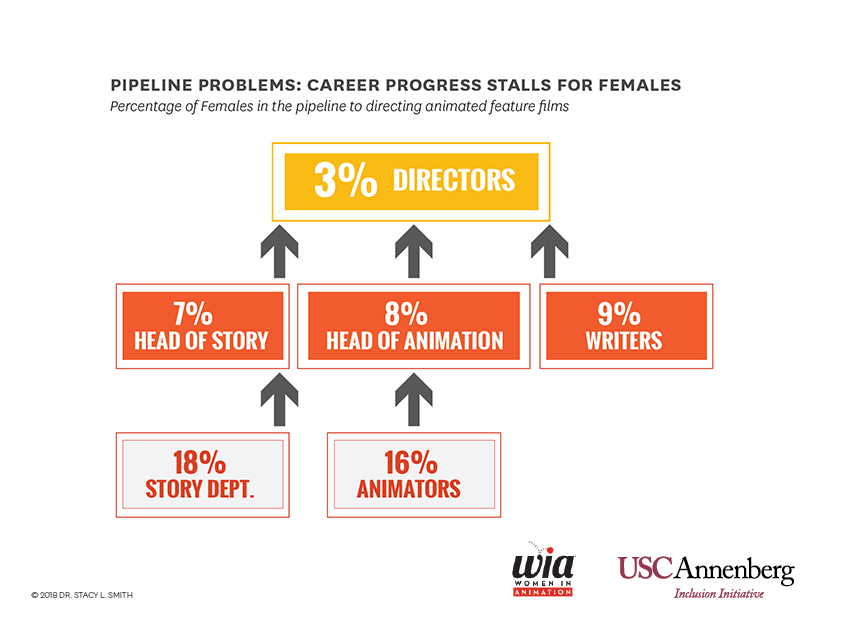
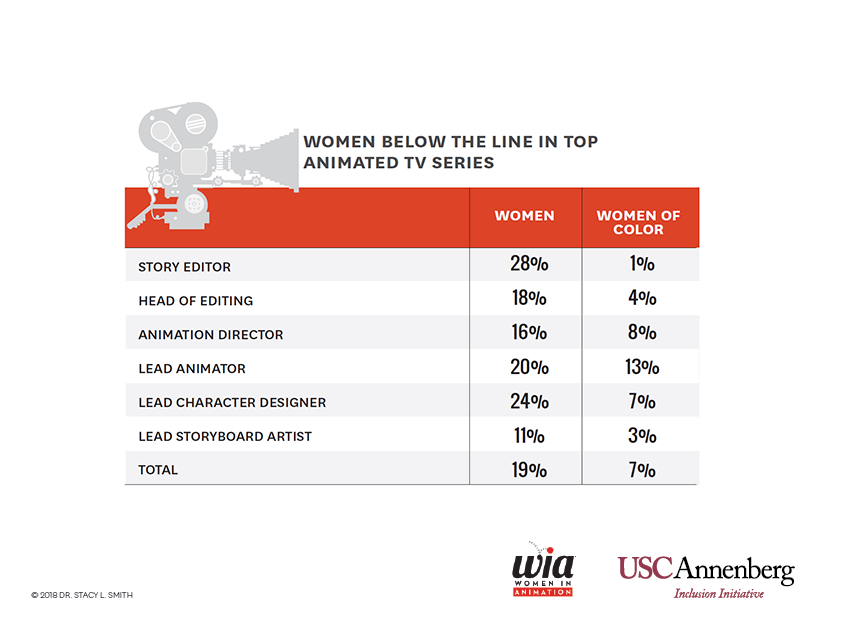
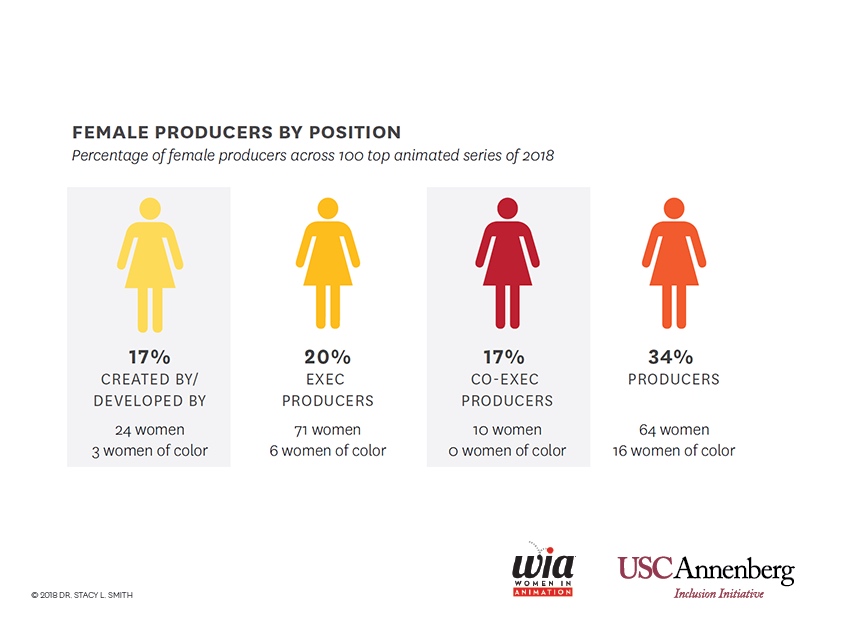
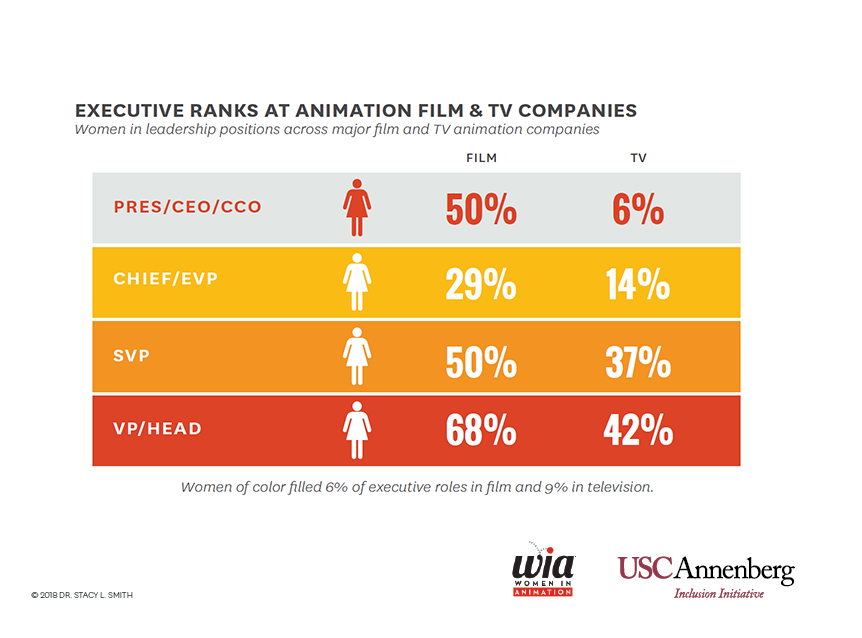
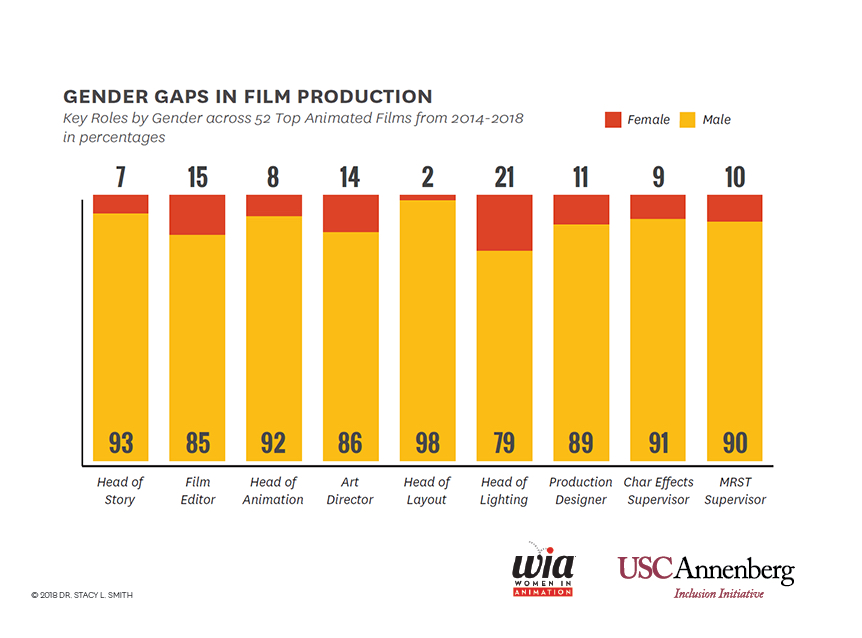
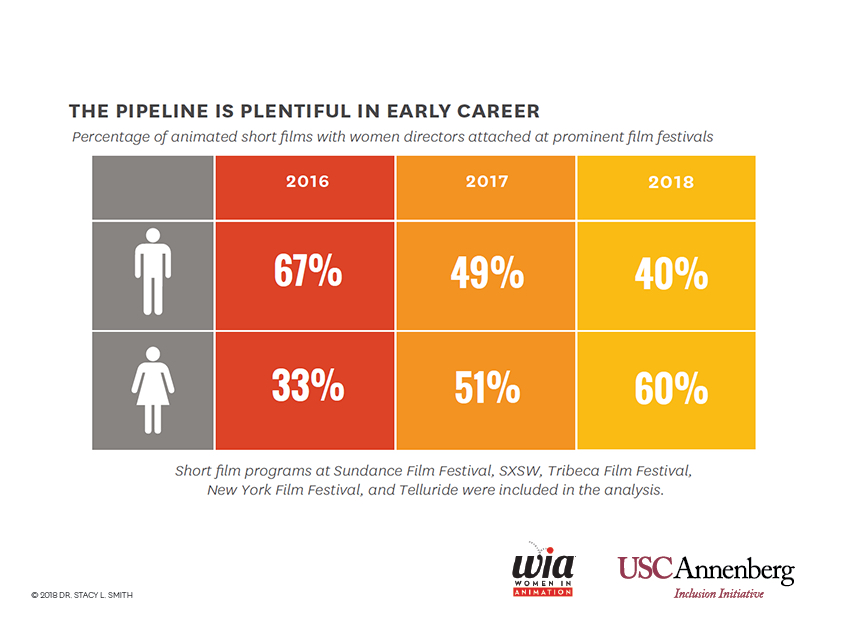
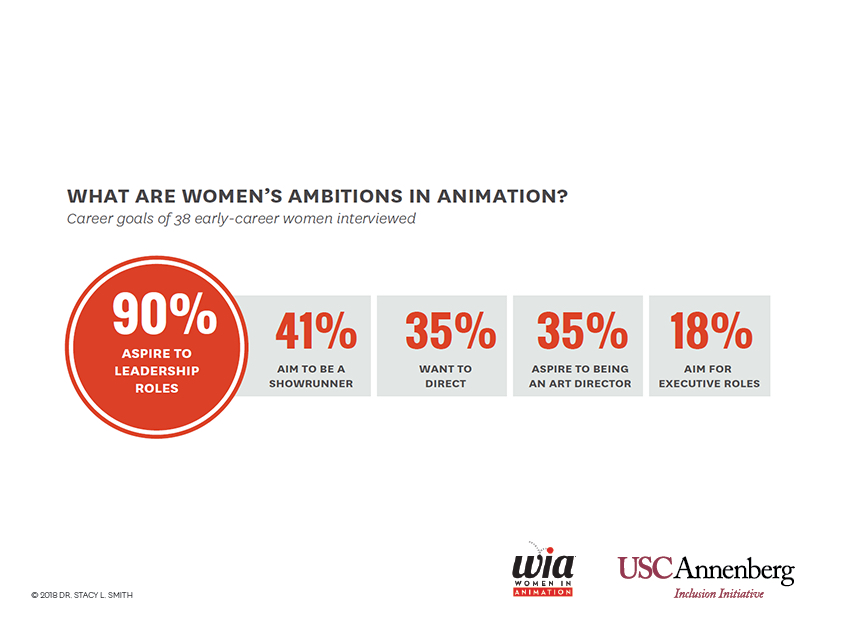
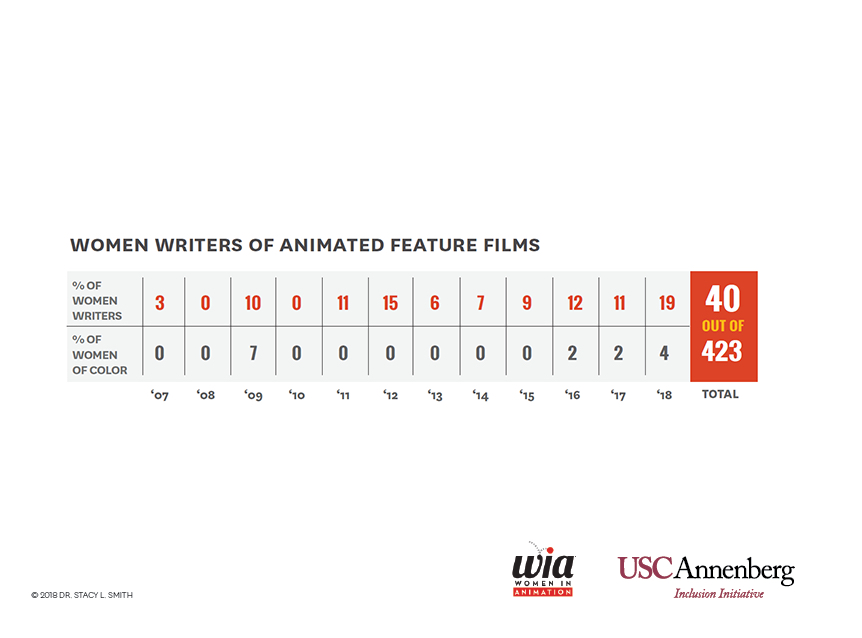
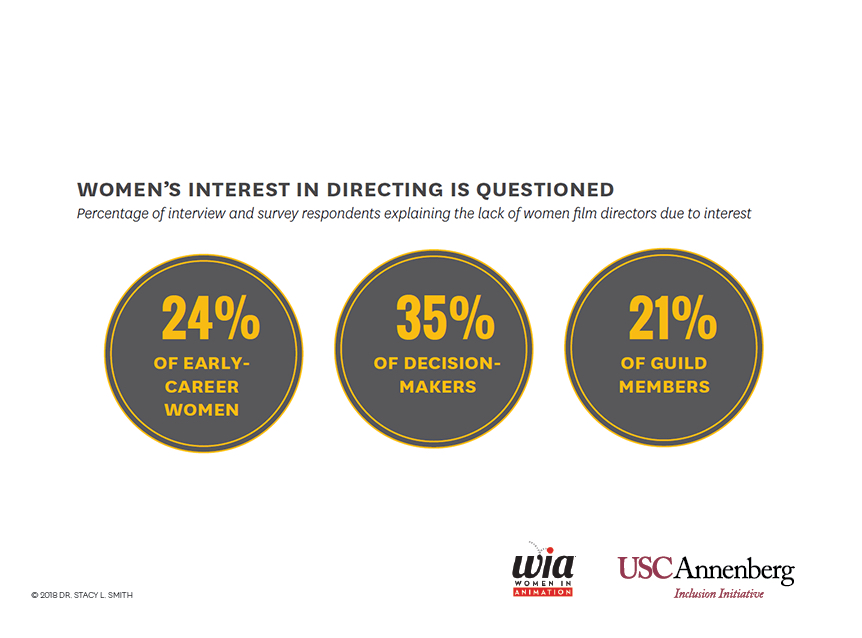
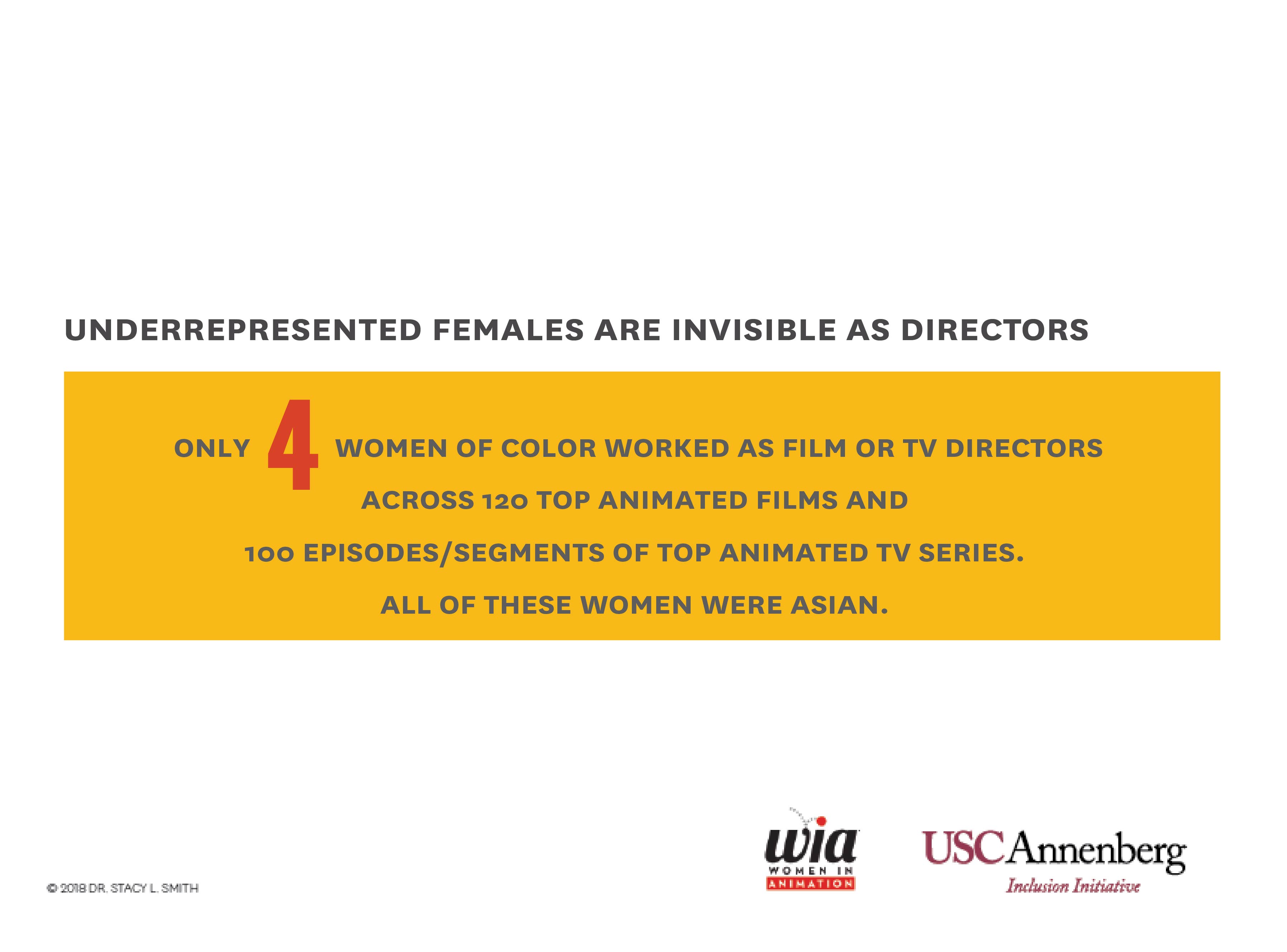
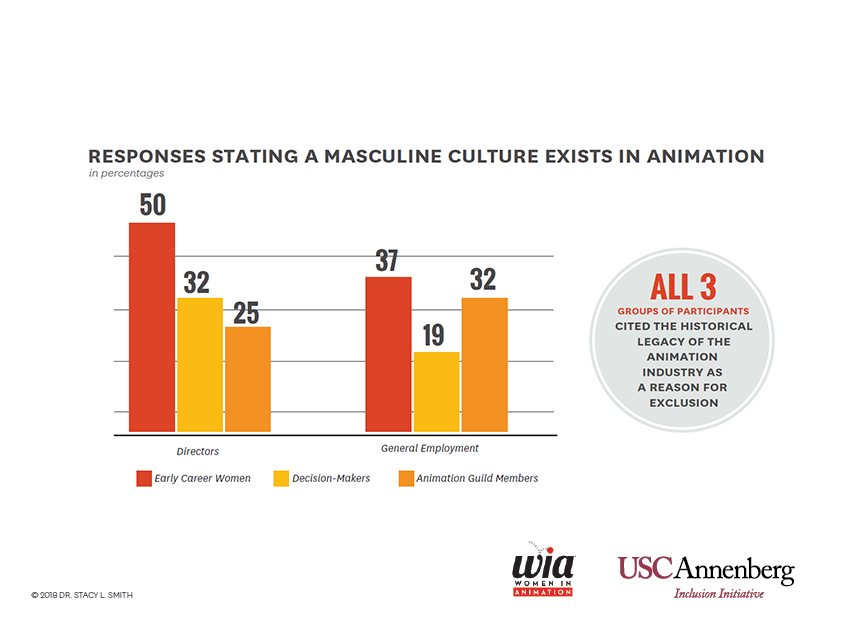
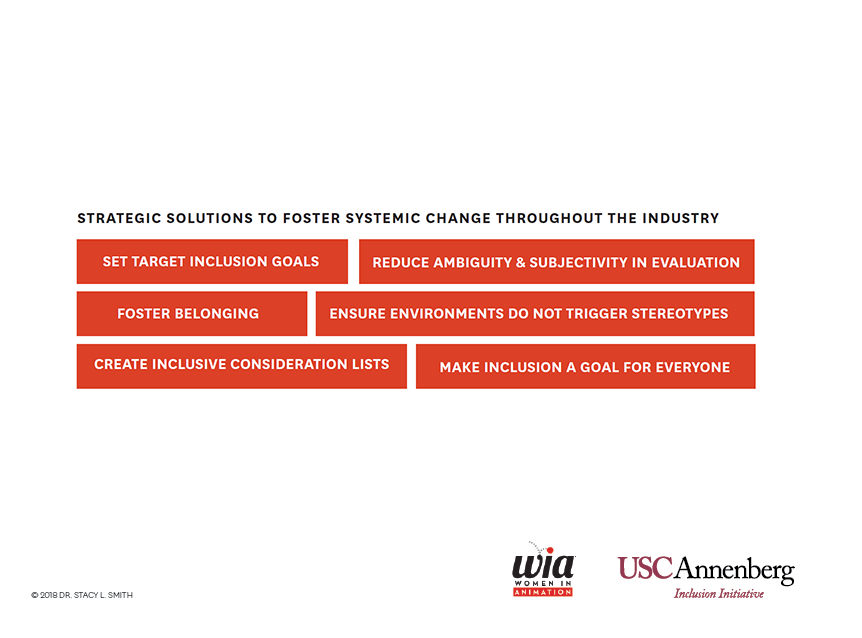

.png)